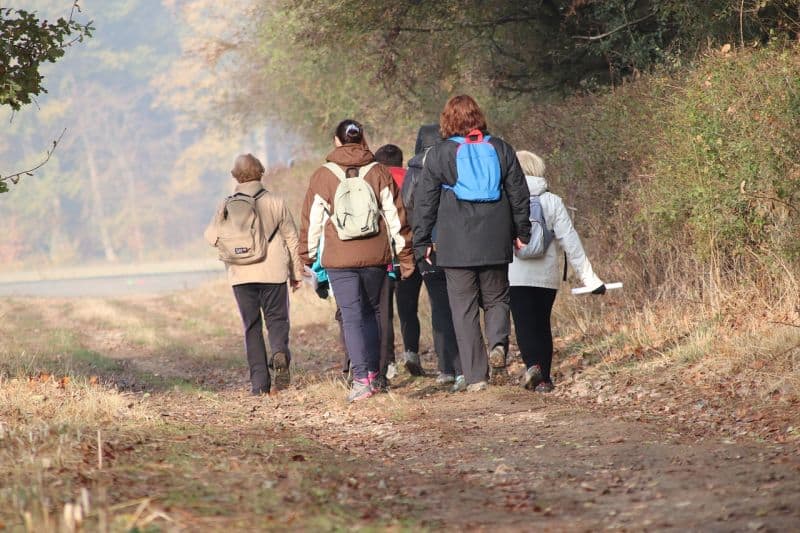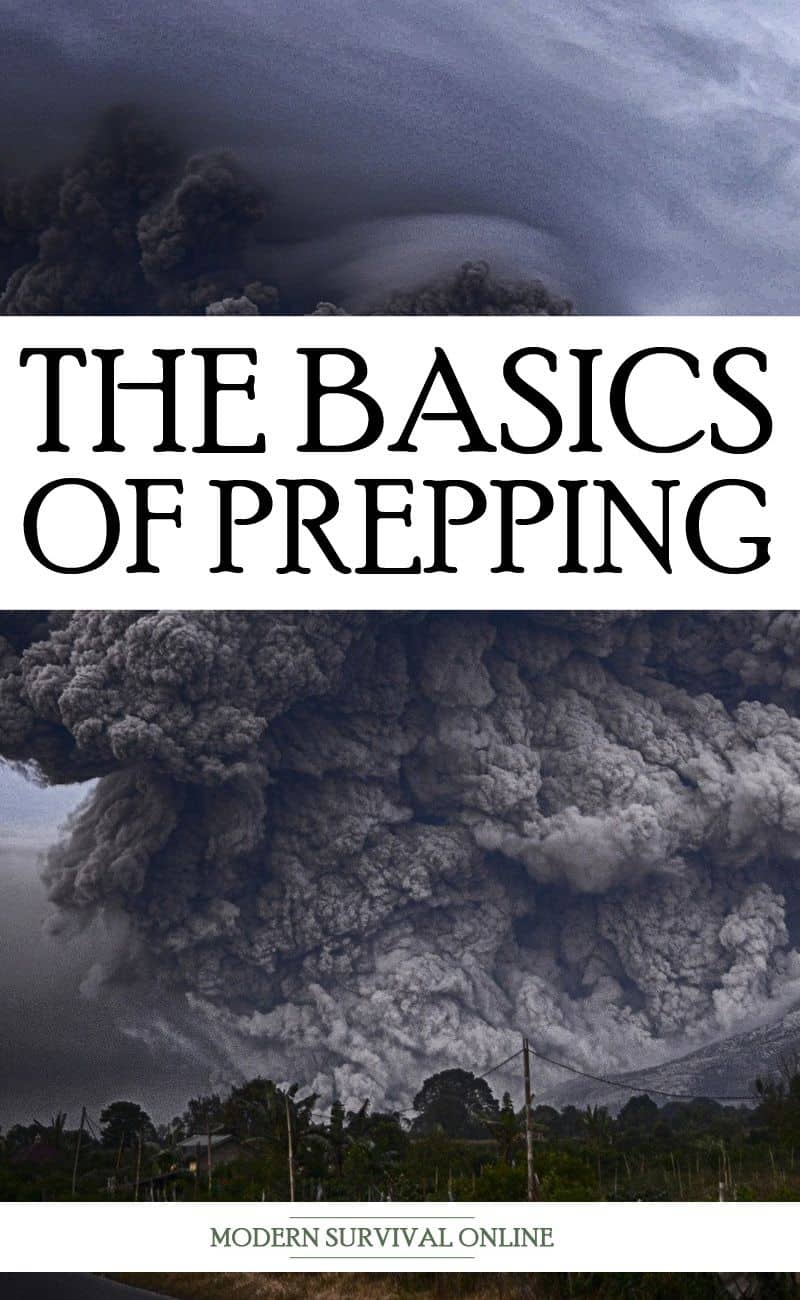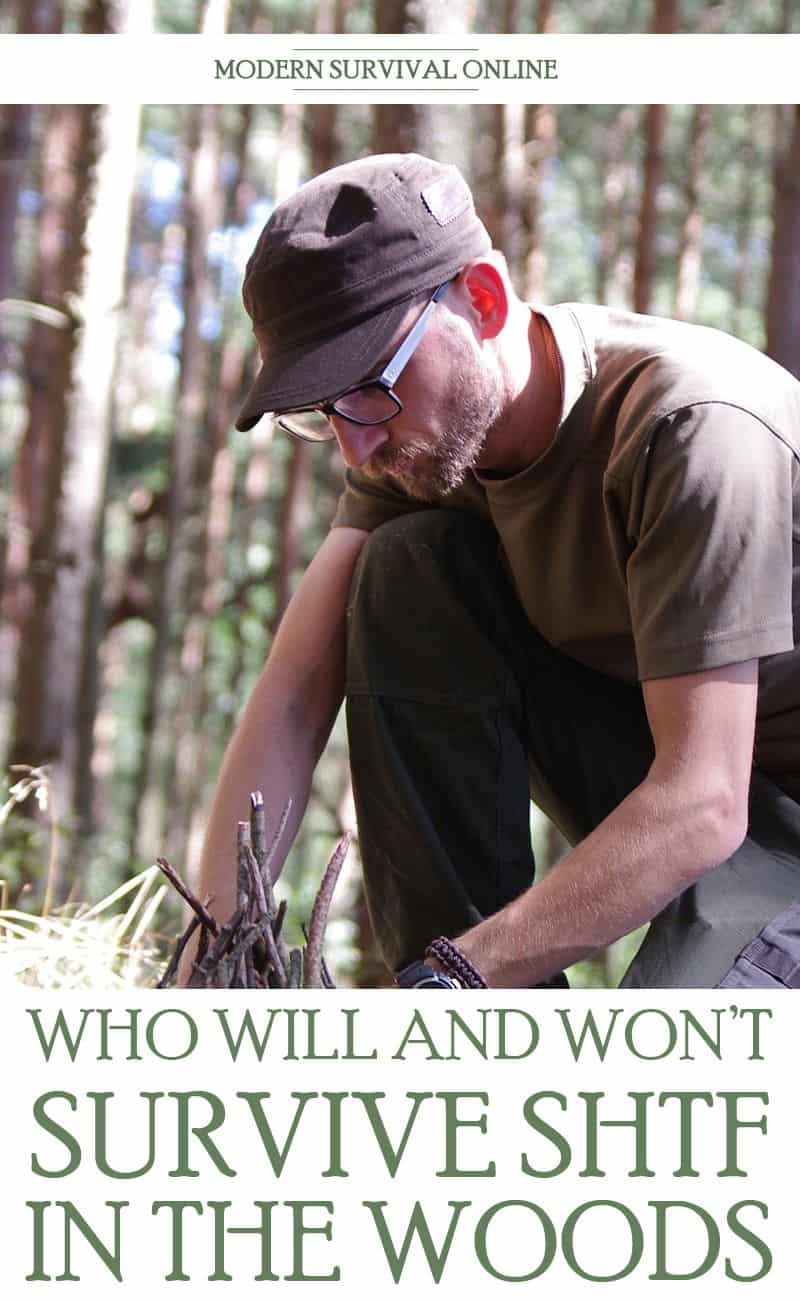If you carry a knife and use it, chances are it’s going to start getting a little rust to go along with the character marks. A pocket knife or a belt knife makes no difference: From hunting, from countless chores, from getting wet, getting drenched in sweat or just extended forays into misty and rainy backcountry, your knife has to put up with a lot.
No matter what kind of steels your knife is made of, eventually it will start to corrode. Corrosion, of course, means rust.
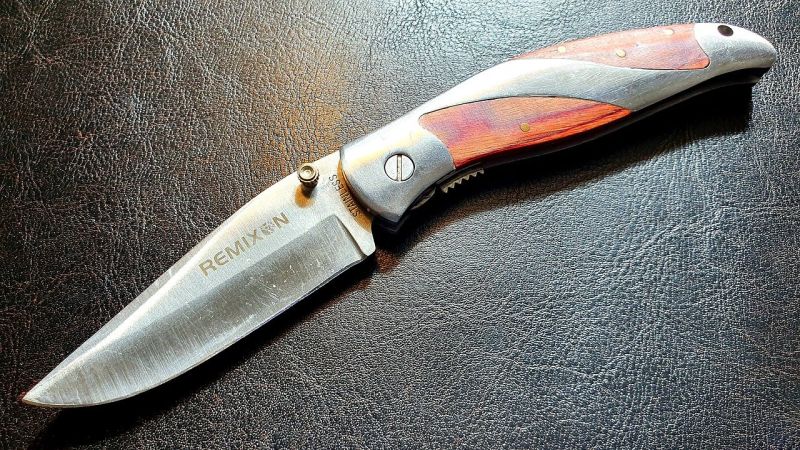
If your knives are conversation pieces, mantelpiece queens kept under glass or curiosities to be collected, no doubt a little rust forming on them will send you into fits of histrionics. But on the other hand, if you’re a hard-working prepper like most of us reading articles on this website, a little rust is just part of a knife’s life.
Just as the edge has to be sharpened, the metal has to be scoured clean of rust. Nothing to get too excited over so long as you know what you’re doing.
There’s more than one way to skin a cat, and more than one way to remove rust. In this article, I’ll show you three ways to do just that.
What Am I Dealing With?
I’m not going to deeply dive into a thorough chemical or metallurgical analysis of rust. While no doubt very interesting, it is beyond the confines of this article, and learning exactly what makes rust, well, rust will not help you prevent it or deal with it.
At any rate, I’m not a metallurgist or a chemist so perhaps I should not opine on such things. That being said, everyone knows that the more you know about your enemy, the easier it is to defeat him. Rust is no different.
Those orange, reddish, or brown spots, streaks and patches that you see breakout on metals of all kinds are rust, in one form or another. Rust itself is just an iron oxide.
Iron oxide is formed by, as you might have guessed if you paid attention in high school science class, a reaction between iron and oxygen molecules in the presence of moisture. It won’t have to be wet, per se, the moisture in the air is enough to get rust forming.
Lots of metals will react in a similar way, undergoing chemical changes that will alter the surface composition. One famous, and arguably beautiful reaction in the same category, is patina, or verdigris which forms on copper and bronze when exposed to the elements.
This greenish, grimy appearance actually has a benefit in that forms a protective skin over the rest of the metal, holding any further reaction and corrosion.
Unfortunately, the same cannot be said for rust. For raw iron or steel rust is the opposite of protective; it is destructive!
If rust goes unchecked long enough any mass of iron, including your favorite pocket knife, can completely corrode away to nothing but a pile of dust and flakey detritus.
It also means that even a small instance of rust can go deep into the metal, instead of wide, leaving unsightly pitting and scarring on the surface.
The rust you are seeking to combat can take many forms. It may appear as the stereotypical brown, cracking and flaking deposits on metal surface, it may appear with crisp edges left behind by a bead of sweat or a drop of water that was missed during a wipe down.
It might even take the form of a thin veneer of dust, unimaginatively called “dust rust”, which is easy enough to wipe away.
No matter how it looks and no matter what form it takes you have my assurances you absolutely do not want it on your knife, and you shouldn’t leave it there!
Practical Causes of Rust
Enough with the amateur chemistry hour already: what do you do, or fail to do, that leads to rust forming on your treasured knife? Well, quite a few things as it turns out.
As I mentioned, rust begins to form on any metal containing iron so long as there is moisture present, even in the air. How fast rust begins to form, and how fast it propagates from there, is dependent on several factors.
One of the most important factors is the type of steel itself. Carbon steels rust far more readily and quickly than stainless steels. Stainless steels themselves are fairly rust resistant, but are not rust-proof as is commonly thought.
Modern steels with high nitrogen content are extraordinarily rust resistant. Obviously, if your knife is not steel, meaning made of ceramic, carbon fiber, plastic or something else, it cannot rust at all.
The finish on your knife also plays an important factor. Many knives are unfinished, bare steel, which means all other things being equal they are more vulnerable to rusting and require more care.
Knives with a surface coating will resist rust the greater or lesser degrees depending on the finish. Note that some surfaces on the knife, typically the bearing surfaces on a folding knife, and the edge itself will always be more vulnerable to rust because they will not be finished.
Aside from that, the two most important factors in determining how vulnerable your knife is to rusting is how often you care for it, and what kind of environment it’s exposed to.
The environment is usually the chief concern; areas with high humidity or, even worse, salt, water air will cause corrosion to form quickly. Obviously a dunk in water or leaving a knife wet, will greatly accelerate rust.
One factor that many knife owners don’t consider is the corrosive quality of sweat coming out of the human body. While this factor is highly variable, some folks sadly seem to have battery acid for sweat based on how quickly it corrodes metal that it gets on.
The only way to find out if your sweat is particularly corrosive is to pay attention to the metal surfaces you interact with regularly.
If you notice brown fingerprints left behind on the blade of your knife, or on your pistol if you carry one, chances are you have some pretty harsh sweat and should be aware of this. Your knife will need maintenance more often.
3 Ways to Remove Rust
Well, it happened. Despite our best efforts and our diligent care our pocket knife has a rusty spot on it.
Maybe it’s on the blade. Maybe it’s on the bolsters, or the guard. It might even be on the screw. No matter why, no matter how it got there, it’s time to take it off.
Before we go any further, this is the part where I have to warn you that if your knife is badly rusted through or showing serious scarring and pitting on steel surfaces, especially locking and action surfaces, you may want to take it into a knifesmith for assessment.
Remember! Rust corrodes metal away and may render your knife unsafe! If you lack the skills and experience to make the call on the metallurgical and mechanical soundness of your knife seek professional assistance!
But we’ll assume that the rust you have is of the common sort and furthermore not too bad. If you’ve not done this before, chances are you don’t have the things you need handy around the house.
Below you’ll find a supply list for tackling the job properly. Note that each of these three methods sort of Nest together one within the other, like those strange Russian nesting dolls.
You’ll start with the least aggressive method, move on to the next one if that fails and if the middle message fails and you move on to the big guns with the last step.
Items you need will be available at any well-stocked gun shop or knife specialty store. If you don’t have one of those around, check out your friendly neighborhood hardware store. You can likely get these items or close approximations there:
- Rust Remover: Look for a specialty rust removing solution, particularly one formulated for knives. Lacking this, you can use common Hoppe’s No. 9 bore cleaner for guns. It is common, available everywhere, and inexpensive.
- Oil: Use any quality knife oil of your choice.
- Copper Scrub Brush: You use a copper brush to get after deposits that just won’t come loose with a rag after a soaking. Be sure you get a copper brush, not a bronze brush, as the two look very similar. Bronze is far more likely to scratch finishes and leave swirl marks on your blade.
- Steel Wool: Get a selection of 000 and 0000 steel wools. We won’t turn to these right away, as all steel wools have a very high chance of marring your finish, and leaving marks in bare steel. Even so, sometimes nothing else will do on stubborn rust.
- Natural fiber rag: I specify natural fiber rag because synthetics can sometimes behave badly as a result of harsh chemicals, melting, and dissolving, and generally making a mess. Stick with natural fibers like wool, cotton, etc.
- Penny: Actual copper penny. This should not be too hard to find. If you want to be double sure the pain is actually copper, get one that’s dated 1981 or older. You’ll use this to scrape rust that is really bad and built up.
- Gloves: Nitrile gloves work fine for this purpose and still afford you a pretty good grip. Working with rust removers and other harsh chemicals you don’t want on your skin means you need to take steps to protect your health. A lot of that stuff will smoke your kidneys!
- Eye Protection: Forgive me for nagging you like your mama, but scraping, grinding, and brushing rust can raise dust particles that you definitely don’t want to get in your eye. Ask me how I know.
- Bench Vise with Padded Jaws: This is strictly optional, but it can make working on a stubborn rust deposit on your knife much easier. Sometimes you just need an extra pair of hands!
Getting Started
Begin by assessing the location and extent of the rusting on your knife. An isolated spot or a couple of patches that you can see, and more importantly know how they got there, will not necessitate disassembly of the knife.
If your knife is rusty all over from a dunk in water or soaking in your sweat from riding in your pocket or on your belt all day, then a detail strip is probably in order, assuming your knife can be disassembled.
Disassembled or not, lay a shop mat or an old towel under the knife. Now’s the time to don your protective gloves, and eye protection. Getting some specks of rust or rust cleaning solution in your eye will absolutely burn like hell. Don’t let it happen to you!
Try the methods below in order. They ascend from least aggressive to most aggressive with correspondingly less or correspondingly more risk to your knife’s finish and steel.
If you get to the end of Method Number Three, and have no obvious change in the status of the rust, it’s time to take it to a specialist.
Method #1 – Soak and Wipe
This method is about as simple as it gets. All you’ll do here is attack the rust directly with little bit of rust remover. A short soak might be in order, too. This method will usually work on so-called “dust rust” and rust deposits that formed recently, and haven’t had a chance to go too deeply into the steel.
- Wet cloth with rust remover.
- Wipe rust spot repeatedly in direction of grain. Observe for removal of rust.
- If the rest is stubborn, place a cloth soaked with the rust remover on the offending rust patches. Be sure to read the instructions on the rust remover, and don’t leave it soaking longer than prescribed.
- After the soaking, wipe the rust again and see if it will come off. If Successful, go to Step 5. If unsuccessful, go to Method #2.
- After all traces of rust are removed, wipe down knife with dry, clean cloth.
- Lightly oil all metal surfaces on the knife with quality oil.
Method #2 – A Good Scrubbing
If the first method fails, you’ll need to bring out more aggressive tools, specifically the copper brush you purchased above. Note that, as with all aggressive cleaning functions, there is a chance of marring your blade’s finish or leaving swirl marks on the steel. Just be warned.
- Wet rust-affected area with rust remover.
- Wet copper brush with rust remover.
- Using gentle pressure, scrub rust spot back and forth with brush in direction of grain of steel. Observe for removal of rust.
- If no change in status of rust, begin using increasing pressure. Remain careful to follow the grain of the steel. Periodically refresh rust remover solution on affected spots. If Successful, go to Step 5. If unsuccessful, go to Method #3.
- After all traces of rust are removed, wipe down knife with dry, clean cloth.
- Lightly oil all metal surfaces on the knife with quality oil.
Method #3 – Scrape and Scrape some more!
This is the last stop for practical rust removal. Anything more aggressive than this, and you risk serious marring of your knife, or are using chemicals that are so aggressive they may potentially do more harm than good.
I heartily recommend that, if this method fails, you just take your knife to a shop for service, or send it back to the manufacturer. Hopefully, you don’t need a new knife!
- Wet affected area with rust remover. Let soak for recommended time.
- Using a penny, scrape rust deposits in direction of grain. A copper penny is hard enough to cut through rust, but will only leave marks that can themselves be removed. That’s why I recommend a copper penny for the task!
- When heavy deposits of rust are removed, reapply rust remover, and switch to steel wool.
- Using 0000 steel wool, buff rust in direction of metal grain. Do not swirl or go in circles! This will leave tough-to-remove cobweb-style scratches on your blade. Observe for rust removal.
- If previous step fails, switch to 000 steel wool, and repeat Steps 3 and 4.
- After all traces of rust are removed, wipe down knife with dry, clean cloth.
- Lightly oil all metal surfaces on the knife with quality oil.
And that’s it! Hopefully your knife is now rust-free. But, in the aftermath of this rust removal operation don’t need to keep a close eye on any areas that were afflicted by rust previously. Pitting left behind by rust it significantly more vulnerable to rust in the future because it is likely to trap moisture. Be sure you stay on top of it and keep those areas oiled.
If the rust starts to get out of control even after your best removal efforts, and is turning into more of a headache to remove, consider having the knife professionally refinished with a protective coating.
If done properly, this will lock out moisture from reaching the steel itself, and keep rust from propagating again. At least, until the finish is breached…
Keep the Rust Off Next Time!
As with most things, an ounce of prevention is worth a pound of cure. Any knife, no matter what steel it is made from, no matter what kind of finish is applied to it can potentially rust.
A regular preventive maintenance routine will keep this rust at bay and save you a lot of scrubbing, sweat and cursing. There are also a few tricks you can employ to make sure rust doesn’t creep up on your knife when you least expect it.
First, don’t keep your knife in any kind of soft case or pouch, especially ones made with fabric. These containers are notorious for trapping moisture directly against the steel of your knife and are a surefire way to get some rust started.
Leather is another major culprit. A leather holster is traditional, but aside from trapping moisture against the blade, chemicals can also leach out of the leather which are highly corrosive. That’s no bueno. Don’t store your knife in anything leather. Carry is fine, storage is not.
If you were actually carrying and using your knife, you know, the way you’re supposed to, it is almost impossible to keep it from getting wet one way or another. The answer is not “stop carrying the knife”; the answer is to keep it oiled.
A quick wipe down with an oily rag that takes about 15 seconds is all that is needed to prevent 99% of the rust you might encounter otherwise.
If a knife does get wet, from water or sweat, wipe it dry as quickly as you can and then oil it when you are able. And for the record you don’t need to go crazy with the oil either; one light coat is all that is required!
How often you’ll need to oil and maintain your knife is dependent on the type of steel, where you live and how often knife is handled or used.
If you’re constantly getting really sweaty when you carry your knife, that’s going to be hard on it. Check it more often.
If you live near the ocean where there is a lot of salt in the air, that is going to be hard on it. Check it more often. If you carry your knife through rain and storm, and use it all the time, the way it is meant to be, that is going to be hard on it. You should, you got it, check it more often. Most of this is common sense.
Lastly, if there is a knife you love and it works well for your purposes but you are having a lot of trouble keeping the rust off of it, you should consider an aftermarket non-metallic finish that will defeat rust utterly.
Cerakote is by far the most popular and one of the best. And also happens to be one of the most cost-effective. Its superior wear qualities are a bonus in this case.
Conclusion
Rusting has always been a major problem for pocket knives, but it need not be the end of the world. Armed with the methods provided in this article, you can get rust off with very little effort and energy to keep your treasured blade from crumbling away into nothing.
With just a little extra effort and preventive care, you can keep rust from forming in the first place so hopefully, in the future, you’ll have no need of the rust-removal methods presented in this article!
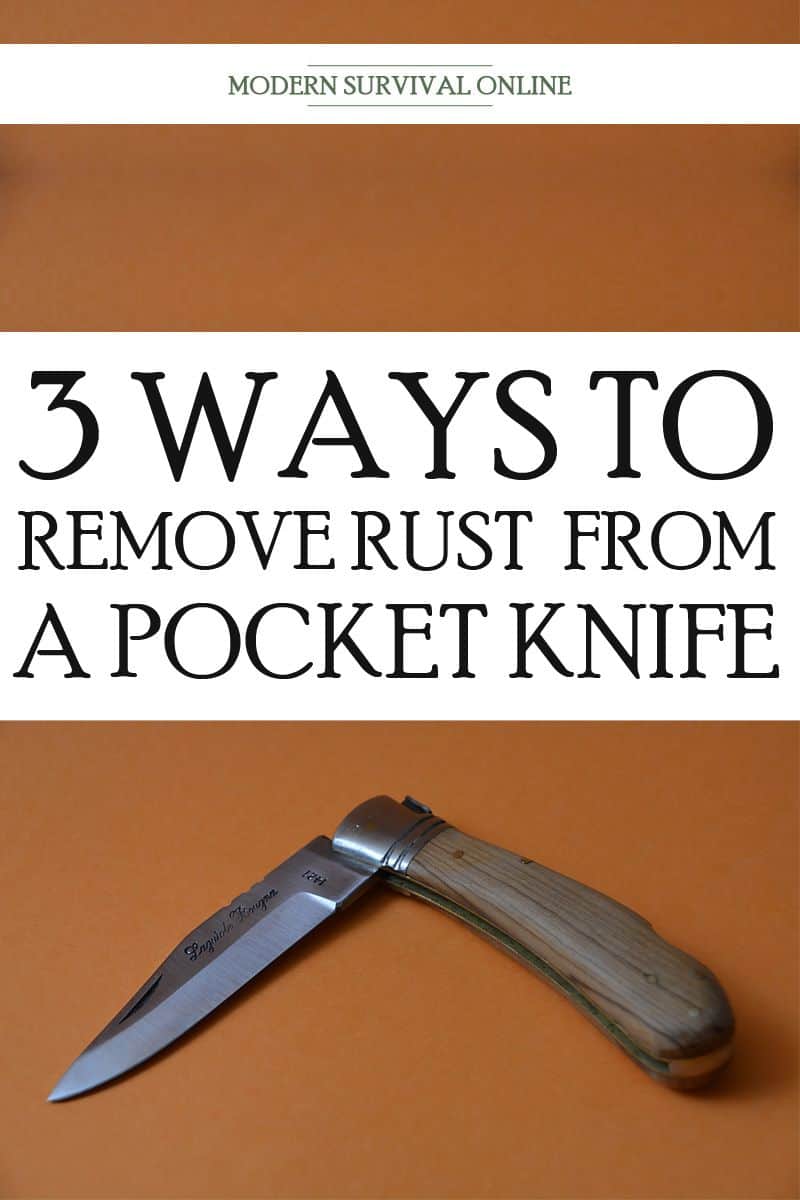
via Modern Survival Online https://ift.tt/3o84LqL
